Abstract
Quantitative data were gathered concerning the extent of resistance induced in mice immunized by specific and nonspecific means and subsequently challenged both parenterally and by aerosol. Animals were immunized specifically by subcutaneous or intraperitoneal injection of Formalin-killed Klebsiella pneumoniae type I, which was also employed as a challenge organism. The intraperitoneal ld50 was 30 bacilli. Nonspecific resistance was induced by injection of a Boivin preparation of Salmonella typhimurium endotoxin. Nonspecific resistance was highest 24 hr after injection of 10 μg of endotoxin. At this time, more than half of the mice survived challenge with 102 but not with 103ld50. Specifically immunized mice were resistant to as much as 105ld50, depending upon the route of immunization. Potency ratios for parenteral challenge were: nonspecific to normal, 100; specific to normal, 104 to 105; specific to nonspecific, 102 to 103. Employing aerosol challenge, specific immunization protected in the ld100 range; nonspecifically immunized animals showed significant prolongation of survival time, but the 30-day mortality was similar to the control group.
Full text
PDF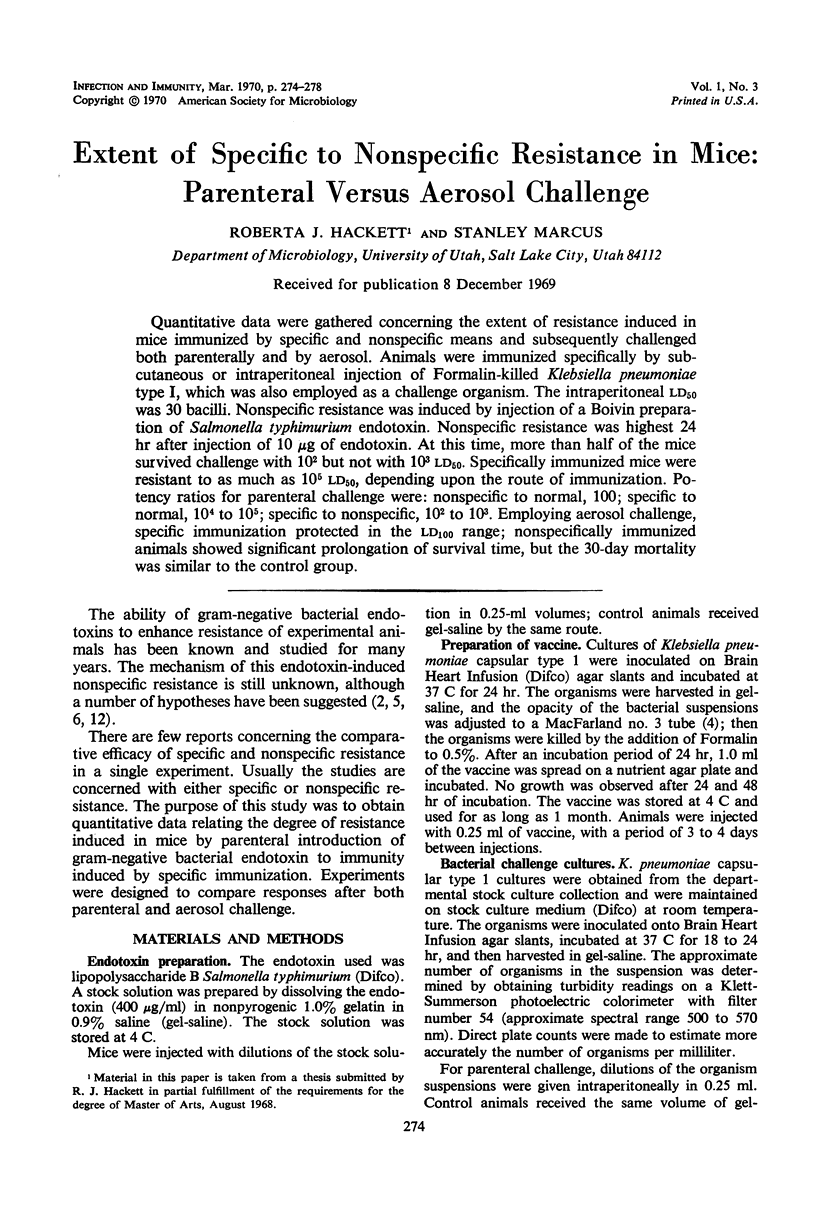
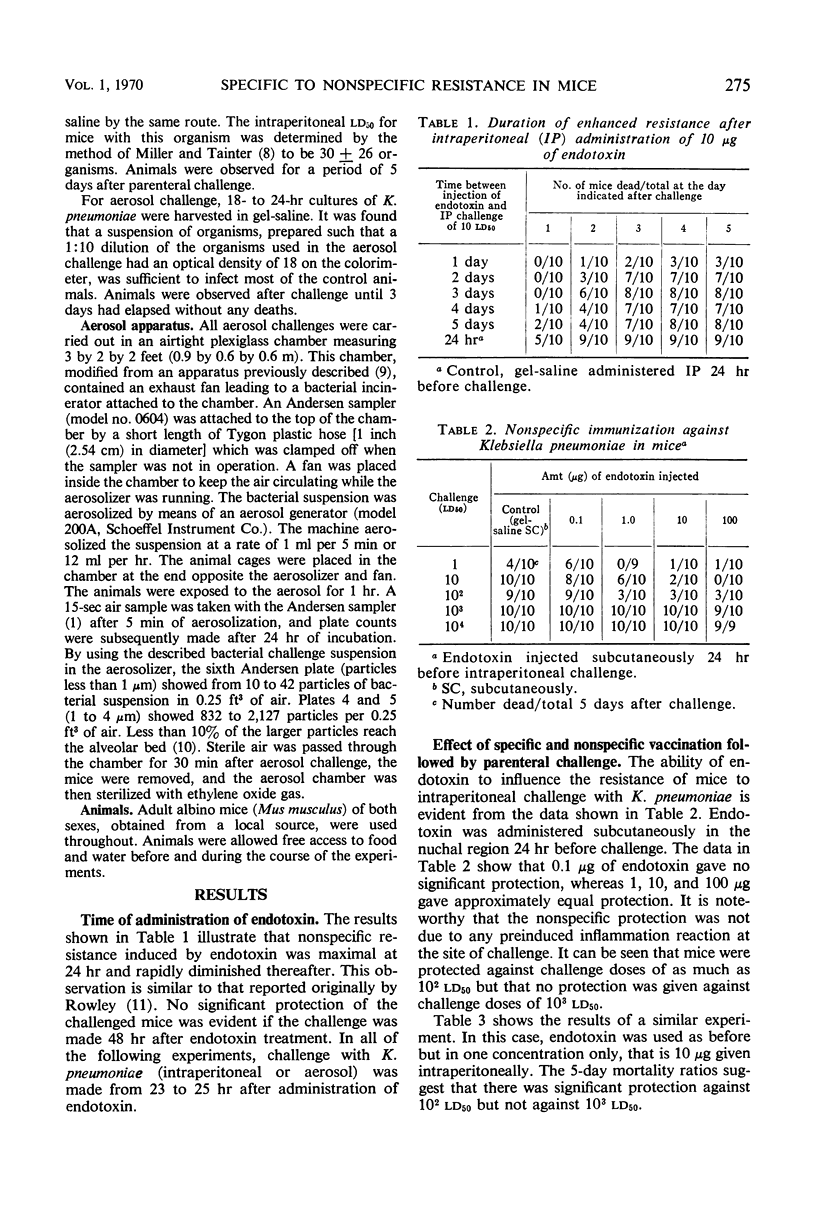
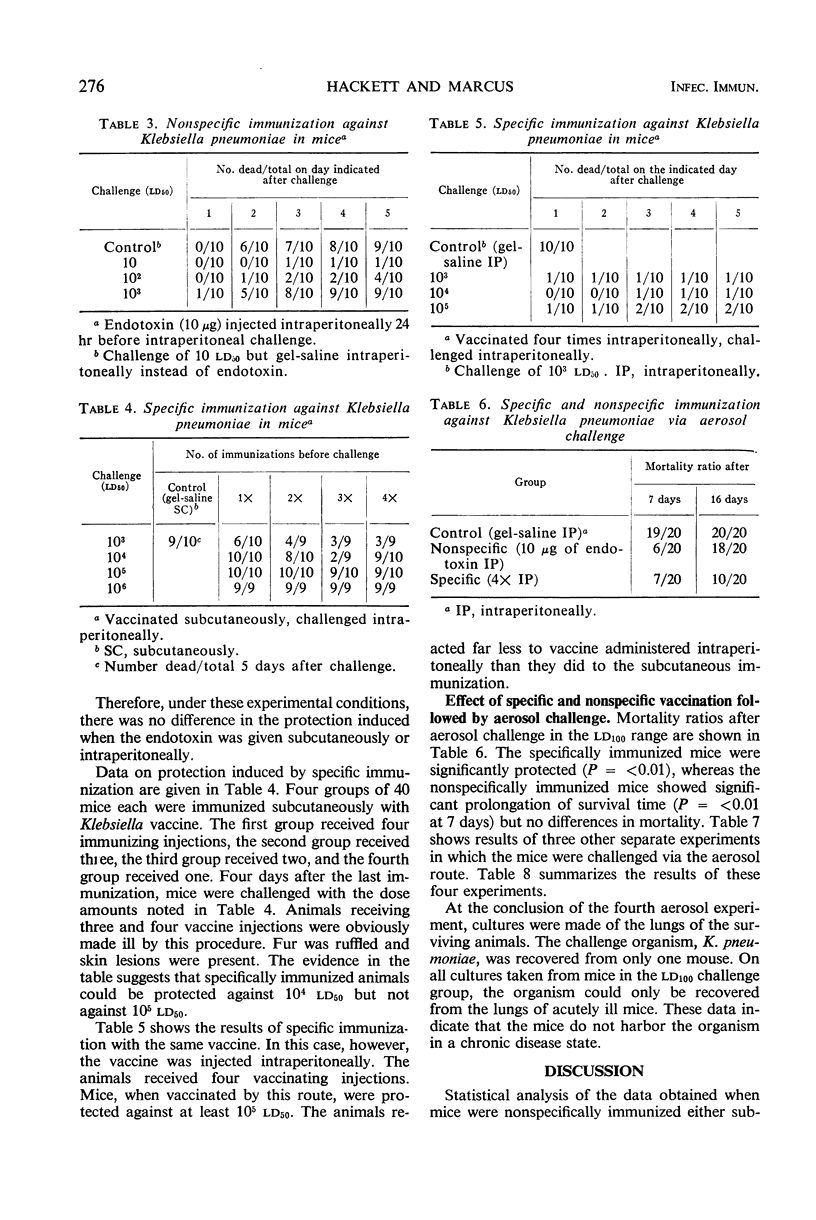
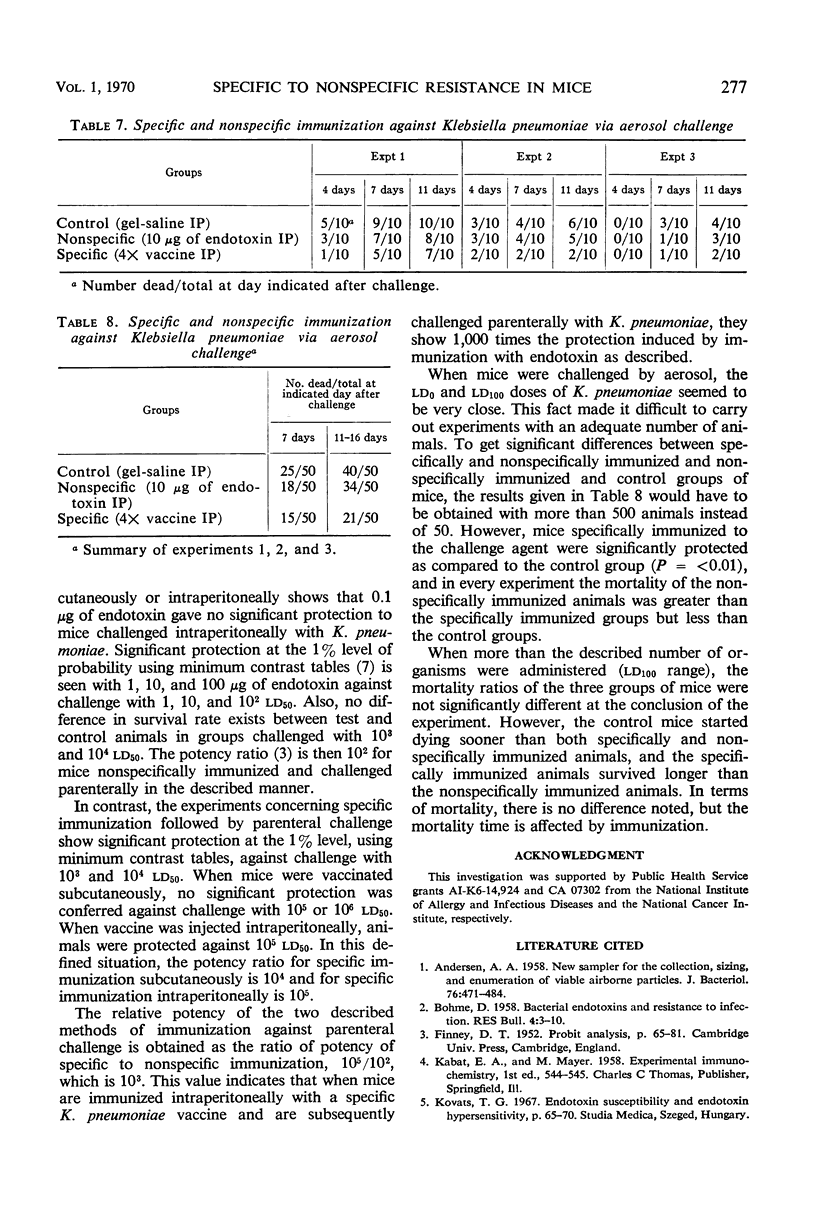
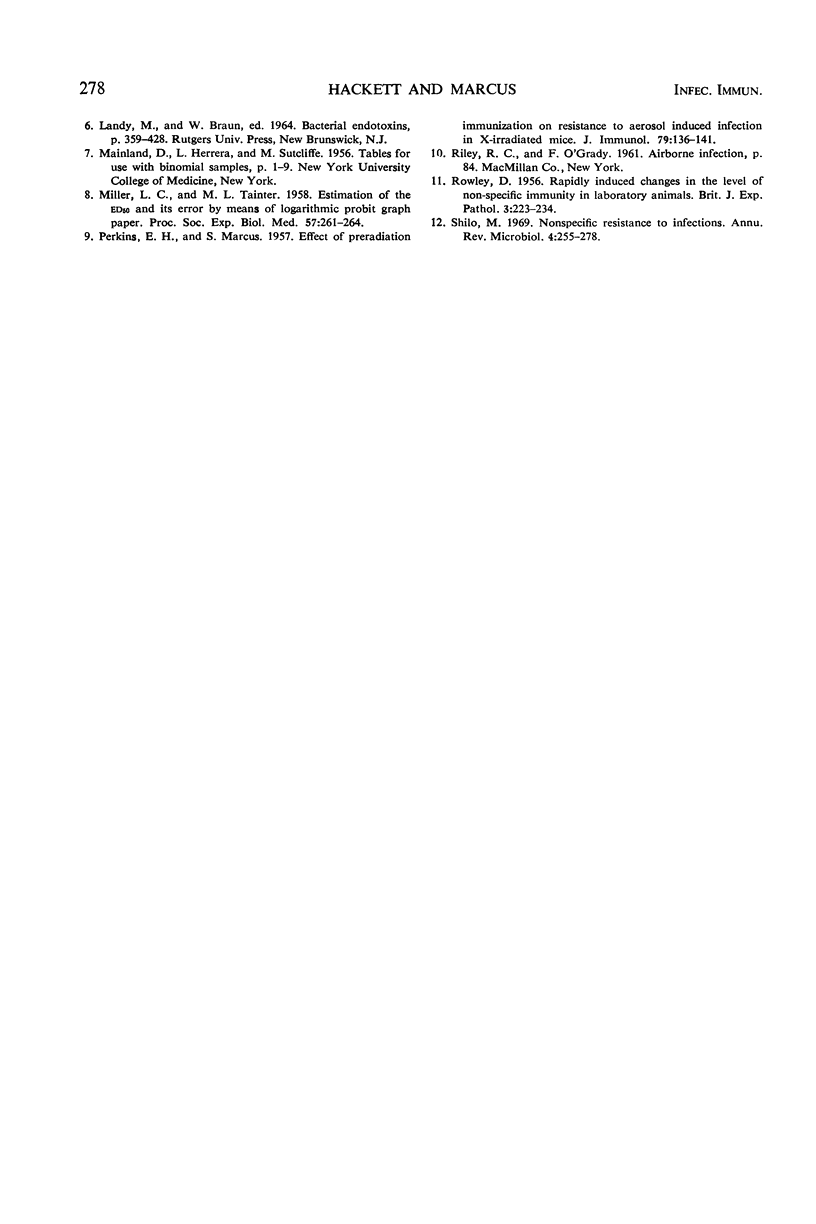
Selected References
These references are in PubMed. This may not be the complete list of references from this article.
- ANDERSEN A. A. New sampler for the collection, sizing, and enumeration of viable airborne particles. J Bacteriol. 1958 Nov;76(5):471–484. doi: 10.1128/jb.76.5.471-484.1958. [DOI] [PMC free article] [PubMed] [Google Scholar]
- PERKINS E. H., MARCUS S. Effect of preradiation immunization on resistance to aerosol-induced infection in x-irradiated mice. J Immunol. 1957 Aug;79(2):136–141. [PubMed] [Google Scholar]
- ROWLEY D. Rapidly induced changes in the level of non-specific immunity in laboratory animals. Br J Exp Pathol. 1956 Jun;37(3):223–234. [PMC free article] [PubMed] [Google Scholar]


